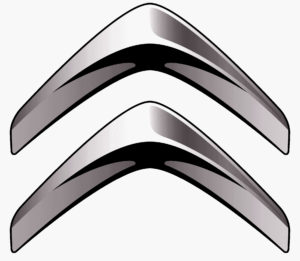Forum Replies Created
-
AuthorPosts
-
It may have been the loss of the spring washer I had used. These days spring washers are carp. Another factor may be the air-con compressor adding an extra jolt.
This time I’m going belt and braces, nyloc and threadlock.
The end of the camshaft was the same diameter along the threaded length. The nylon part definitely comes into play.I shall put the dead pulley in the lathe and cut off the rivet heads to see how it comes apart.
The rack didn’t need to be removed, just completely undone, including the hydraulic connection.
Finally removed the pulley. The internal splines had disappeared. I used a whole spray can of brake cleaner to wash away all the pulley debris.
Before I installed the new pulley, I put two beads of weld on the front face and one bead of weld on the rear face. They should stop the rivets chattering, becoming loose and breaking.
You can see the welds I put on the old pulley.
Most of the gubbins are back in place. I need to machine a couple of M9 nuts as the originals fell into the black hole, never to be seen again.When I rebuilt this engine I used a split locking washer under the pulley nut. I can see it had fallen apart and disappeared allowing the pulley to wobble.
Eventually the hardened camshaft completely wore away the splines on the pulley.
So far, left wing off, radiator off, battery out. The pulley still won’t come out. The rack will have to be moved to the left.
The rack can wait until tomorrow, I’ve had enough.
The new nut will be a nyloc with Loctite.I didn’t have much time today. I did remove the nut from the pulley. Even without the nut the camshaft splines should engage with the pulley. The pulley is not connected to the splines.
Worst case is that the splines on the camshaft are kaput, but unlikely.
I shall pull off more stuff tomorrow and report.Hello, if you copy and paste bb fully linked the picture will appear in the thread.
For the handbrake, no.
For lights left on, yes!Did the eagle eyed notice a parking brake warning light marked P in white?
Here’s the wheel


Wrapped steering wheels.
I’ve wrapped the steering wheel, reasonably straightforward.
The plastic coating of the stem was a different matter. The original was badly damaged, so cut it off.
It has taken five attempts and eight feet of shrinkwrap to get it right to learn a technique.What I’ve learnt.
You need a heat gun with a fishtail nozzle.
You need about one foot of 50mm black shrinkwrap.
You will also need asbestos fingers!Once the wrap is threaded on to the stem, push it as far up to the wheel as possible. Gently heat the last inch until it shrinks a bit. Poke, push or cajole the wrap under the chrome finisher. Once it’s in a about quarter inch, heat just that area until it fully shrinks.
The important thing is to tightly wrap loom tape (non adhesive) around the shrunk part.
This holds it tight while you pull the rest of the wrap.
Only shrink about one inch at a time. You have to remember the wrap only shrinks in one direction, the diameter. Any creases across the stem have to be pulled taught. Hence the tape at the finisher is to stop it moving.
Slowly move down the stem to finish.
Once it’s shrunk, go over it all again on a hotter setting.
Then remove the loom tape. Ta Daa.Being an idiot, I then shrunk on another layer. It went OK.
Citric acid, about 25g to one litre and soak overnight should get the rust off.
Or, spending your money, Evaporust will do it.
The thin plate under the rear left height corrector on mine was like a sieve. I covered one side with masking tape then spread Araldite on the other side. Once set, I did that again for the other side.
Once painted it looked OK.How much of that part is visible? Should it be paint or chrome?
Do Darrin or Jamie have better examples? Jamie is away until next week.
My Safari has an original temperature gauge. Ignition off, needle at bottom.
Ignition on, needle rises to the middle of the scale.
Start the engine, needle drops back to bottom then slowly rises with engine temperature.My saloon uses a converted fuel gauge. Needle only moves with rising engine temperature.
I fitted a 105ºC temperature warning switch.
Now comes the tedious bit, bodywork.
Previously restored cars have been plywood and glassfibre (early Marcos) or plain glassfibre (later Marcos and Piper).
Replacing curvy rusted steel is not my forte. Luckily, filler is.Looking in my crystal ball I can forsee many trips to AFT Fluorotec in Welwyn Garden City. Burning off the paint and filler in their oven. Home to repair. Back again to hot zinc spray the seams. Back home for epoxy primer.
But can only do one panel at a time to stop flash rusting.The top coats will be cellulose. Pretty user friendly and doesn’t need a separate air supply to the hood.
After I think, six years, the Safari is back on wheels on terra firma.
It is surprising how much smaller the car looks now it is on the floor.
Quite a palaver as the axle stands were two feet high. Blocks of wood, three trolley jacks and a lot of huffing and puffing.It was exciting when the last few inches were at 32 feet per second per second. At least the bump stops worked.
-
AuthorPosts





